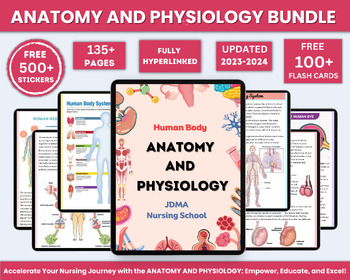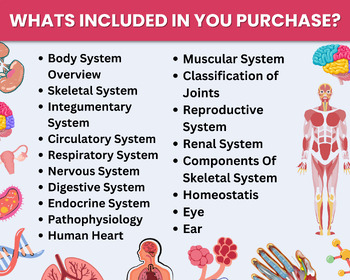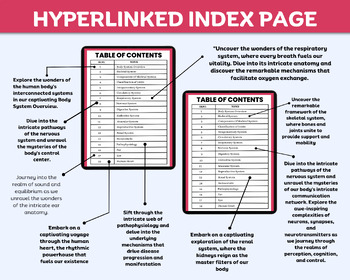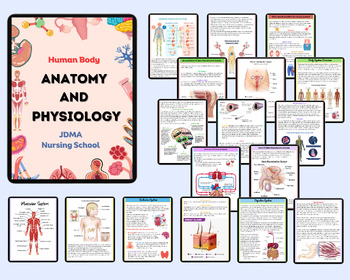Anatomy & Physiology Bundle with Flashcards and Stickers | Anatomy Study Guide
- PDF
Description
Anatomy & Physiology Bundle with Flashcards and Stickers | Anatomy Study Guide | Nursing School Notes | Medical Notes | Instant Download PDF
Anatomy and Physiology Flashcards & Stickers Digital Download for student nurses
What's included in your bundle?
-Body System Overview
-Skeletal System
-Components Of Skeletal System
-Classification of Joints
-Integumentary System
-Circulatory System
-Respiratory System
-Nervous System
-Digestive System
-Endocrine System
-Muscular System
-Reproductive System
-Renal System
-Homeostatic
-Pathophysiology
-Ear
-Eye
-Human Heart
Anatomy: The study of the structure and organization of living organisms, from the macroscopic level (visible to the naked eye) to the microscopic level (cellular and subcellular structures).
Physiology: The study of the functions and processes that occur within living organisms, investigating how different structures work together to maintain life and carry out various functions.
ANATOMY & PHYSIOLOGY FLASH CARDS 101+
PAGES✅
TABLE OF CONTENT
1. Digestive system
2. Gallbladder and biliary tract
3. hepatic lobule
4. Spleen
5. Pancreas and its close relations
6. Intestines
7. Liver
8. Liver lobes
9. Oral cavity
10. Nephron
11. Kidney
12. Upper respiratory tract
13. Larynx
14. Pulmonary circulation
15. Lungs
16. Respiratory physiology
17. Spinal cord
18. Neuron
19. Brain
20. Dermatomes
21. Brain
22. Dermatomes
23. Male reproductive system
24. Ovary
26. Female reproductive system
27. Female reproductive system
28. cellular changes
29. Mitosis / meiosis
30. Apoptosis / necrosis
31. Gas exchange
32. Components of blood
33. Levels of organisation
34. Anatomical terms
35. Skeleton
36. Muscles & bones of the body
36. View of the knee
37. Bones of the foot
38. Bones of the hand
39. Bones of the skull
40. Conducting system
41. Heart
42. Heart valves
43. coronary arteries
44. cardiac cycle
45. endocrine system
46. Hormones of the anterior pituitary
47. The eye
48. The ear
49. Skin
✅TERMS OF USE: You are NOT allowed to share or re-sell the digital files. Thank you!!
This Product is an INSTANT DIGITAL DOWNLOAD, it's anything but an actual thing — Instant downloads are Digital things that you can quickly download and utilize. You will get a Thank you record card in which you will get a connection, you want to tap on that interface which will take you to your items.





